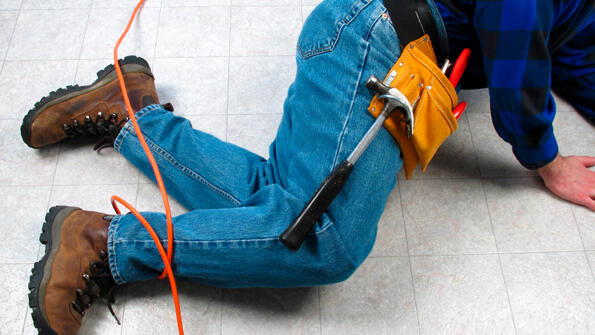Preventing on-the-job injuries and providing enough work to those who want it are good first steps to retain valuable home health care aides, according to a U.S. study.
Based on a national survey of home health and hospice aides, having too few work hours or injuries were associated with a desire to leave the profession while having a consistent patient assignment and health insurance were linked with an intent to stay.
“The United States will need one million new home care aides between 2012 and 2022, which makes it the highest-growth occupation,” said study coauthor Natasha S. Bryant of the LeadingAge Center for Applied Research in Washington, D.C. “There may not be enough people to fill the jobs,” she said.
“It can be difficult to attract and retain high quality home health aides due to low wages, inadequate training, physical and demanding work, and schedules that are often part time and unpredictable,” Bryant told Reuters Health by email.
Consistent work assignment was associated with reduced intention to leave the job, which is also important for certified nursing assistants in nursing homes, she noted.
The researchers used data from the National Home and Hospice Care Survey in 2007, a sample of more than 1,000 Medicare or Medicaid certified home health and hospice agencies and more than 3,300 aides working for those agencies. In phone surveys, the participants answered questions on job satisfaction, stressors and demands, intent to leave the job and compensation, among other factors.
About one quarter of workers said they were very likely to leave their job in the next year or were currently looking for a different job. More than 80 percent said they were assigned to the same patients each week and 13 percent said they had suffered an injury on the job in the past year.
Most injuries are back injuries and other strains that come from lifting, said Reagan A. Baughman, the John A. Hogan distinguished professor of economics at the University of New Hampshire in Durham, who was not part of the new study.
“Patients are not only relatively heavy, but (unlike something like boxes) also unsteady, which makes for difficult conditions,” Baughman said. “There are a variety of lifting devices available, and based on what I have read, they are pretty widely available (if not always used) in nursing homes,” but less so in patients’ homes, she said.
Higher job satisfaction and feeling valued by the organization often meant less intent to leave the job, as did employer-provided health insurance, but hourly wages were not related to intent to leave.
People working at for-profit chain agencies were more than twice as likely to intend to leave the job as those in non-profit agencies, according to the results published in The Gerontologist.
“Workers employed in agencies that encouraged them to discuss client care with the family — a measure of aide empowerment — also had greater odds of being extremely satisfied,” Bryant said.
Aides need education and ongoing support as well as advancement opportunities to help them grow professionally and earn better wages, she said.
“Agencies can educate and train home health aides prior to employment and on-the-job on safe workplace practices, including patient lifts, how to handle difficult patients or family members, infection control and prevention and management of violent attacks,” Bryant said.
Families can respect the boundaries and the scope of the aide’s responsibilities and learn how to communicate with workers and to treat them with respect and dignity, she said.
“The work is not suited to everyone, but many who do it really love it, but find the conditions sometimes force them to leave the jobs they love,” said Sandra Butler of the School of Social Work at the University of Maine in Orono.
“It has been shown that older workers are often less likely to leave this work, in part as they may be less dependent on full time work and benefits (perhaps because they receive Social Security and/or Medicare) and they may feel more affinity to the people they are caring for,” Butler told Reuters Health by email.
SOURCE: bit.ly/1WPF5hX The Gerontologist, online April 21, 2016, REUTERS Health











